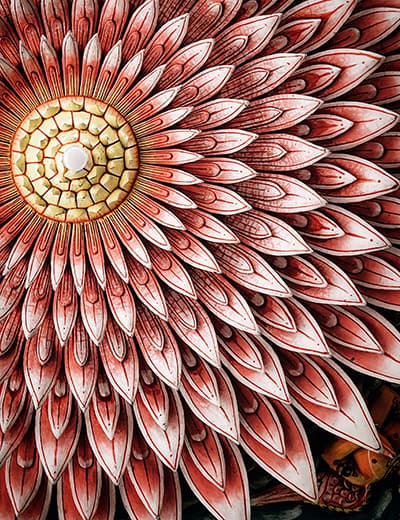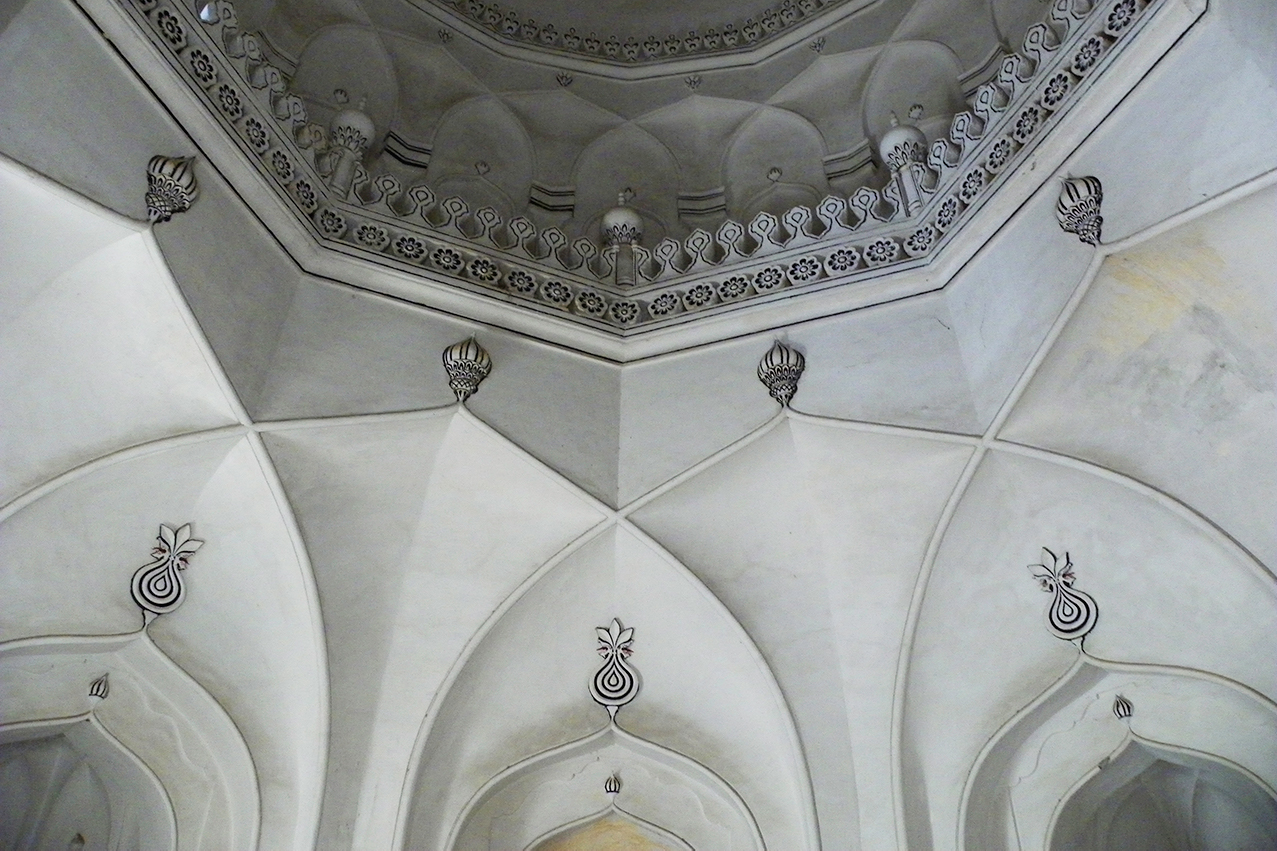
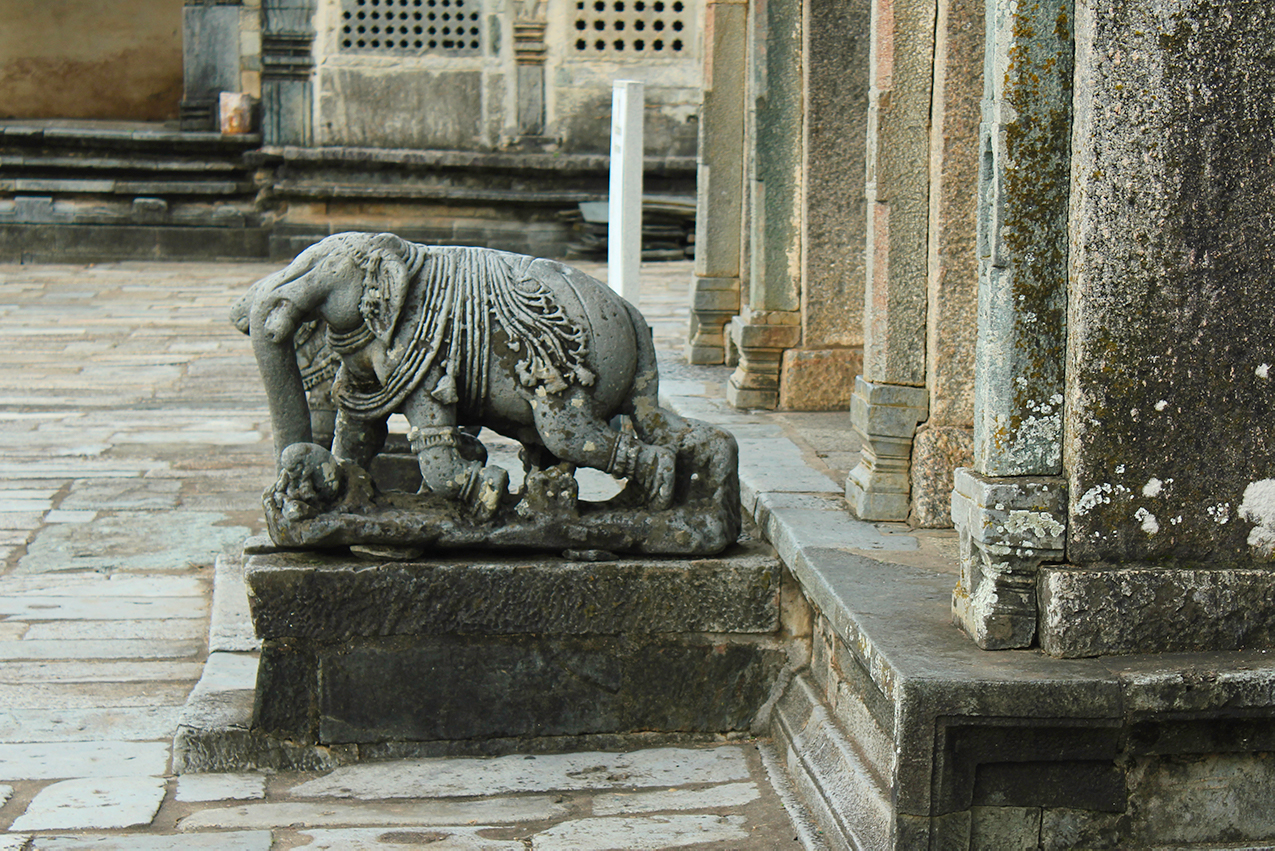
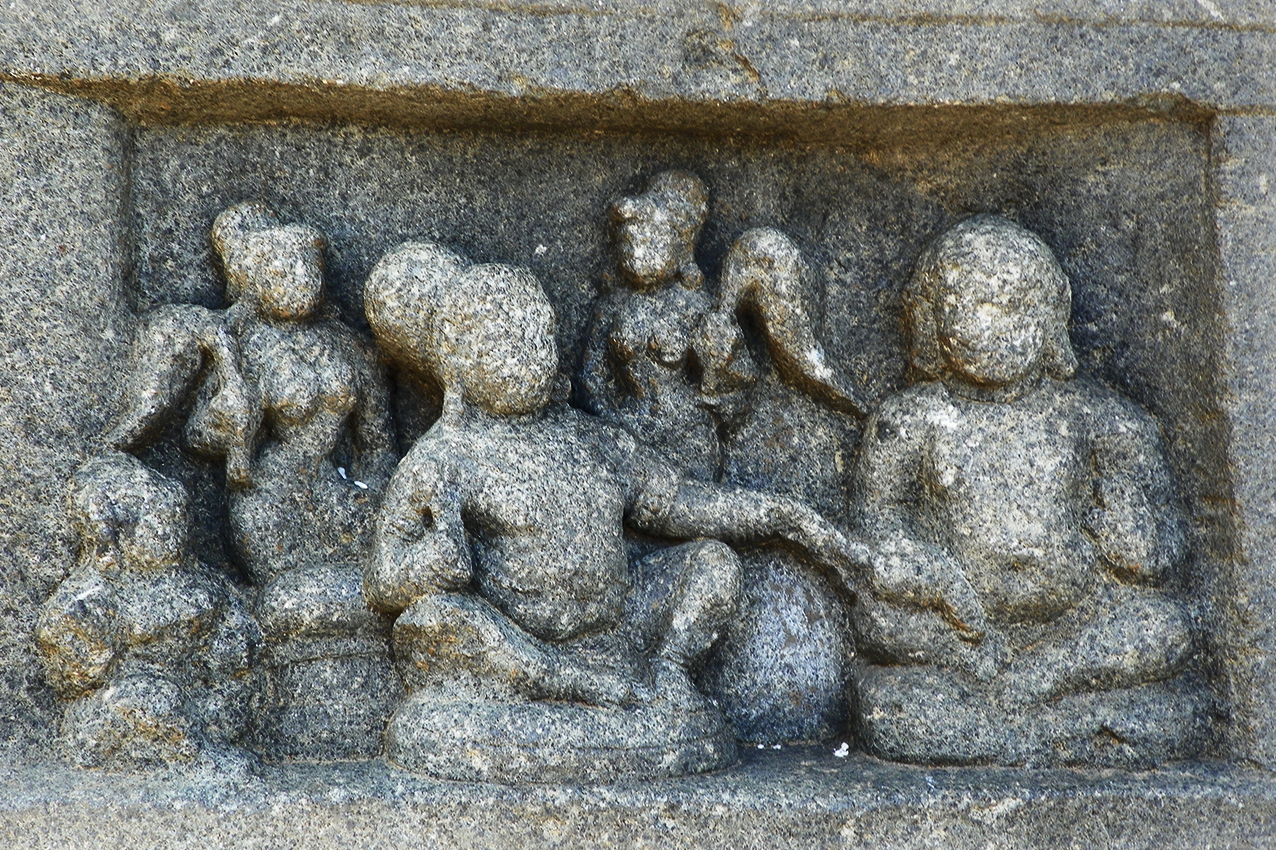
A stream of crowd separates at the helm to reveal the image of a proud, triumphal arch. A cool breeze filters across the lake and into the eye of a cave, softening an ancient dance of sculpted figures. Amidst sounds of a hawker's call to wares, the aroma of a simmering biryani sifts through. Illuminated by the first light of the day, a crumbling ruin narrates stories of its wager with time.
In this journey through some of the historical cities of South India, trace the legacy of empires from the classical and medieval period. Begin in Hyderabad, whose cyberspace frontiers draw back to a history of competing sultanates. Passing former Islamic strongholds in north Karnataka, travel to the once-flourishing capitals of Hindu empires in Badami and Hampi. Towards the end, traverse the quiet settlements surrounding Halebidu, a former seat of power of the Hoysala empire.
Arrive in Hyderabad, whose streets were laid out around the waters of river Musi by a 16th-century Qutb Shahi emperor. Now a bustling metropolis, the city still exudes an old-world charm in its imposing mosques and mausoleums. The 16th-century fortress of Golconda resounds with stories of an old, diamond vault, while the extensive Salar Jung museum displays a wealth of artefacts from around the world.
Travelling westwards, glimpse at the architectural heritage preserved in the countryside of Bidar, Gulbarga and Vijayapura. The soaring minaret of a madrasa in Bidar, delicate Persian art adorning the tombs of Gulbarga, and the magnificent, domed mausoleum of Vijayapura, depict the artisanship of the Bahmani Sultanate that ruled the land from the 14th to 17th centuries.
Moving deeper into the Deccan, alight at the quiet village of Badami settled along the banks of an ancient lake. Badami, as the capital of the Chalukya empire from the 6th to 8th centuries, preserves a singular craftsmanship in the exquisite friezes and rock-cut temples that adorn its sculpted, red sandstone hills. Nearby, the villages of Aihole and Pattadakal further a display of immaculate rock-cut shrines from the classical period.
After a short drive, arrive at Hampi, capital of the Vijayanagara empire in the 14th century. Surrounded by leafy palms and rocky boulder hills, the ruins of Hampi whisper stories of elaborate temple rituals, city planning and an eventual decline at the hands of battle.
Further south, meander in the quiet settlements surrounding Halebidu and Belur. Seat of the powerful Hoysala empire in the 11th century, its distinctive temples exemplify the dance of art in stone, profused with details of the lifestyle, traditions and religious beliefs of the people.
Towards the end, arrive at Shravanabelagola, where the monolith of a revered Jain figure looks on meditatively over an expanse of temples and matted hills. Dating back to the 10th century, the town links its origins to the asceticism of a Mauryan emperor, becoming an important pilgrimage centre for Jainism.
-
Cities
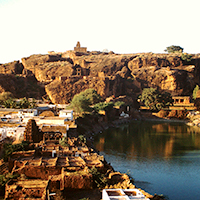
Badami
In the Bagalkot district of North Karnataka in India, Badami was formerly called Vatapi. The place is known for its cave temples that are cut out of sandstone rocks which surrounds the Agastya Lake. Three among the four cave temples are dedicated to deities of Hinduism and one temple is dedicated to Jainism. It has also been declared as the largest Heritage city in India by the Central Government.
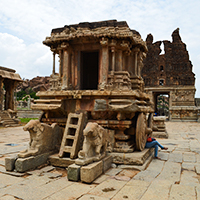
Hampi
A temple town located in North Karnataka, Hampi is a hamlet stranded in the past. During the early 14th century, it was home to more than 2,000 spectacular monuments and served as a world centre for trade in precious stones. Its sprawling landscape of enormous boulders and fascinating rock formations where the ruins from the glorious past reside in silence, evoke in one a sense of wistful grandeur.
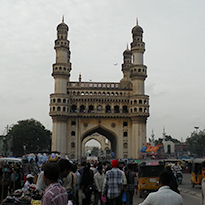
Hyderabad
Situated on the banks of river Musi, the city of Hyderabad stands mightily straddling the lines of past and present. Famous for its spicy cuisine and biryani, the city in recent times has come to be associated with development and modernity. However, Hyderabad holds its soul in the historic quarters of the old city, where the many monuments of the city hold within them glimpses from a bygone era of regal nawabs.
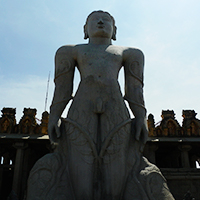
Shravanabelagola
An important pilgrimage centre in Jainism, Shravanabelagola is dotted with leafy palms and ancient temples. Its settlements are huddled together between twin granite hills, one of which bears the monolith of a Tirthankara, the spiritual teacher. Under thick canopies that betray clear, sunlit skies, the town seems stilled at the time when a Mauryan emperor chose to lead the life of a Jain ascetic, marking the origin of a pilgrimage.
-
EXPERIENCES
Amble beside centuries of history
Walk among the ruins of the towering Virupaksha temple, that has been the site of religious festivities since the classical era. On top of the surrounding hills, linger in the elegantly sculpted halls of temples dedicated to Lord Shiva and Lord Ganesha. As the evening sun sets, explore the bustling markets of Hampi.
Browse through sustainable handicrafts
Pick from an array of diverse handicraft products, woven out of banana fibre and other locally sourced materials, at a handicrafts centre in Aanegundi. Interact with the craftswomen at the workshop that are pioneers of the craft, as they reveal the techniques of weaving bags, baskets and decorative items.
Discover the heritage spaces of a city
Weave your way through the old forts, arched gateways, mosques and palaces of Hyderabad, where the thread of history extends both ways, into a glorious past and a cyberspace frontier. Explore the sprawling compounds of the 13th century Golconda Fort, view the iconic triumphal arch of Charminar and visit the palace of the Nizams.
Go on a biryani trail
On a walk centred on the Hyderabadi biryani, trace the origin and evolution of this much-loved dish. Understand its various influences and follow the process of preparation where rice, meat and spices are cooked on a slow fire in earthen pots. Towards the end, savour a traditional meal of biryani yourself.
Visit caves suspended in time
Wander the timeless caves of Badami, each dedicated to a specific deity – namely, Lord Shiva and Vishnu of Hinduism and Lord Mahavira of Jainism. Overlooking a sacred lake, the temples give the best opportunity to delve into intricate rock carvings and Chalukyan temples of Nagara and Dravidian architecture styles.
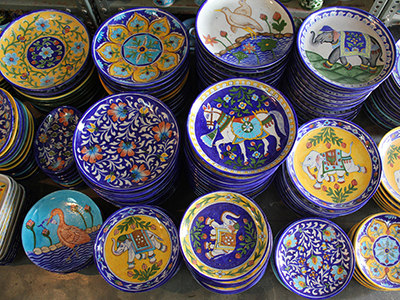
Where Art is Made
This journey explores the many handicraft traditions ranging from pottery to textiles in the states of Rajasthan and Uttar Pradesh...
Bespoke Journey • North India
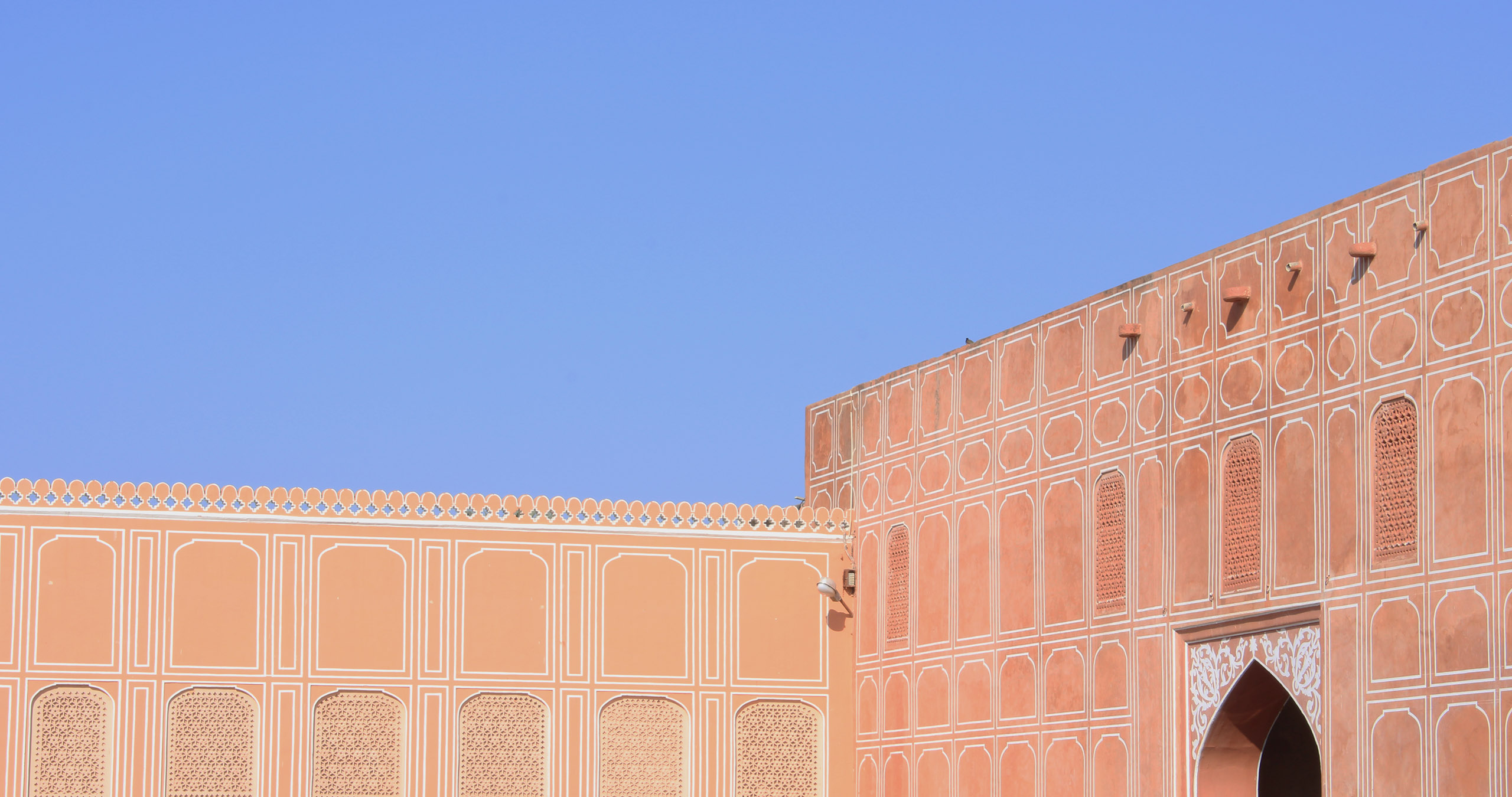
Light, Lines and Spaces
Delve into our journey with Cereal across Rajasthan and Agra, and discover heritage architecture through the lens of this magazine...
Behind-The-Scenes • North India
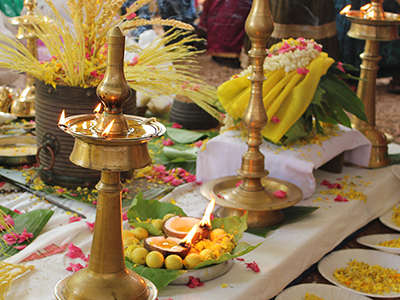
Unified by Fire
The thin line between private and public can be almost invisible in India as compared to other places in the world...
Narrative • South India
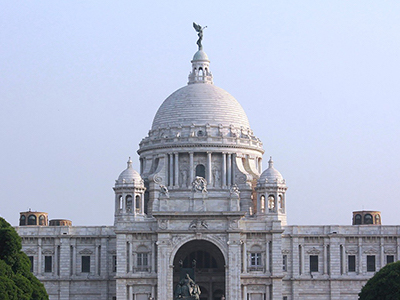
Calcutta for the first time
When we went to Calcutta for the first time, we were a bit fearful, reducing the West Bengali capital to a...
Narrative • East India
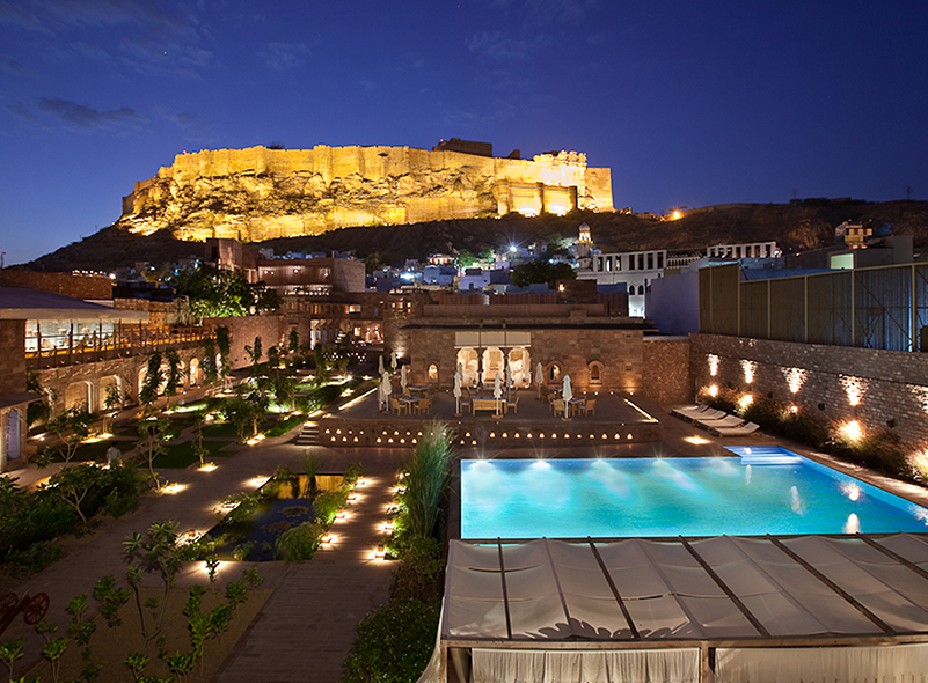
RAAS Jodhpur
The walls of old Jodhpur hold stories of ancient and modern worlds - of a glorious past lost in a...
Hotel Guide • North India
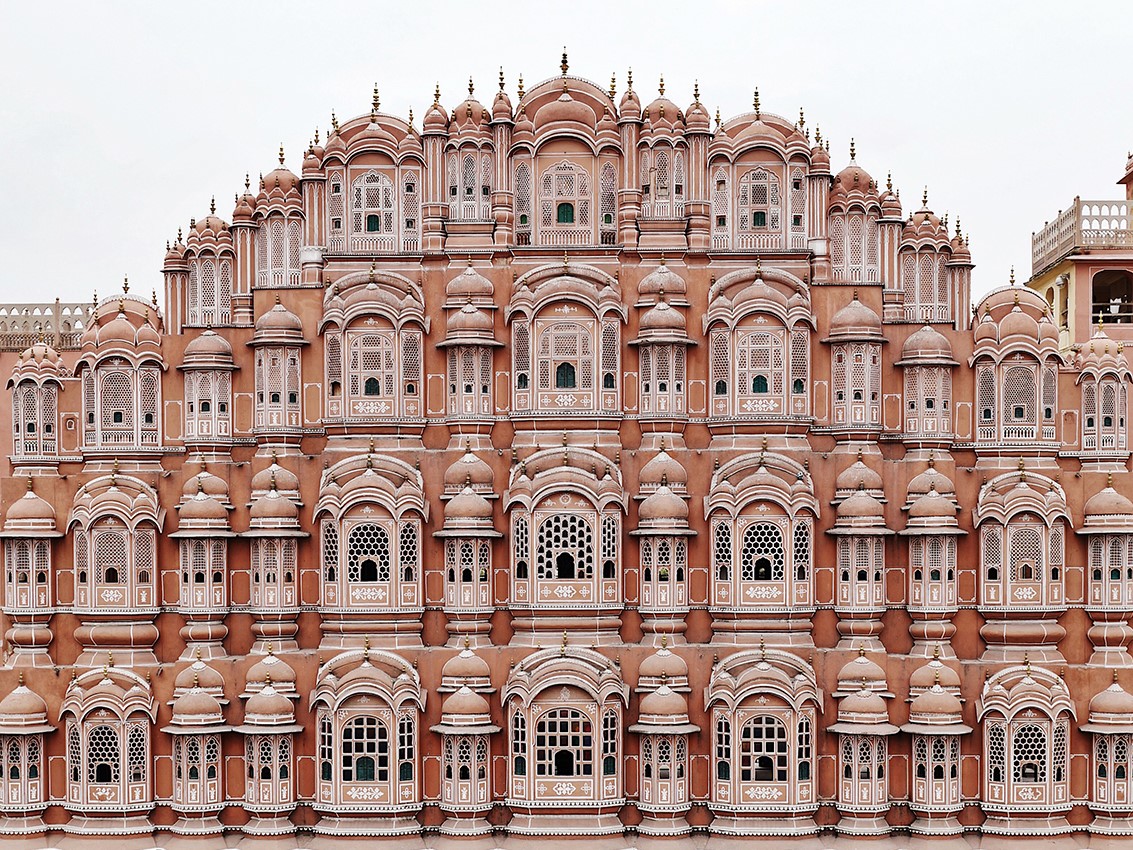
In the Land of Palaces and Kings
This journey explores the rich Rajput and Mughal heritage exemplified by the resplendent architecture of North India...


